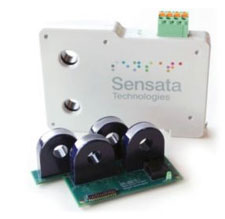Since a solar system was implicated in a major fire in New Jersey last month, California is moving on common sense safety measures that ensure the continuing goodwill of the industry.
The last thing the solar industry needs is negative public relations just as Americans are readily adopting it. Comments like this could easily cause people to back off from adding solar: "We may very well not be able to save buildings that have alternative energy," New Jersey’s acting fire marshall went as far to say.
Firefighters were ordered to stay away from the roof because of electrocution concerns from the solar system, which made it much more difficult to extinguish the fire.
But it doesn’t have to be that way. California will soon require "arc fault detectors" in solar installations, which are already included in the 2011 National Electrical Code. Many states haven’t enforced the code because of the lack of these sensors on the market, John Kluza of Sensata Technologies told Solar Novus.
These detectors shut down a solar system if they sense increased electrical noise. It adds to the cost of a solar system, of course, about $25 to $100 for each string inverter, Kluza told Greentech Solar.
The situation in New Jersey was unfortunate, he says, but presents "a good opportunity for electrical protection units to get a higher profile."
Sensata, which makes sensors and controls, recently introduced a UL-certified arc fault detector:

"Module-level devices would be one of the most complete solutions to the broad set of concerns firefighters have with rooftop solar because they would potentially eliminate current from wiring even if sunlight was still hitting the modules," notes Greentech, but the industry has been so concerned with getting the costs down that they haven’t been used much.
Clearly, codes need to be adopted that protect solar systems and firefighters need to be educated on how to deal with them.
"The solar energy industry takes safety very seriously. We are working closely with firefighters and organizations all across the country on the development of enhanced codes and standards for solar installations. We also intend to ramp up our educational efforts aimed at all first responders … A review of product standards, building codes and first responder training, especially for firefighters, is an important place to start," says Ken Johnson of the Solar Energy Industries Association.
When we posted the article on the New Jersey fire, we received some insightful comments: "Many monitoring instruments as well as disconnect switches could be installed to isolate the energy generated from the solar panels," says Jose Villares.
"Combine DC optimisers on each solar panel with a database of solar installations that notify fire crews when this technology has been applied. Prominently displayed safety information on site would let crews know whether there is an electrical risk from an installation. In regards to the need to get onto the roof to cut into the building for fire fighting purposes, regulations for large buildings could include set aside walkways allowing arrays to be installed without limiting fire fighting options," says Gary Tulie.

 Loading...
Loading...
Why add to the cost of your system when arc fault detection is already built into SolarEdge inverters with their high performance power optimizers at no additional cost?
Solar Edge does not guarantee isolation of the panels as it uses electronic components which can be subject to failure. The only true safe way to isolate solar panels is with a mechanical device which introduces air gap technology. I would recommend the Remote Solar Isolator!